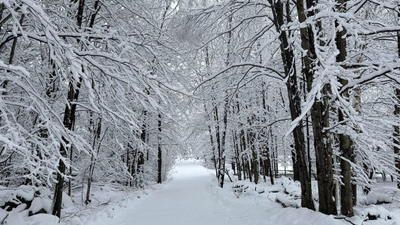
(The Hill) – Federal forecasters are shutting down dreams of a snowy Christmas this season for most of the U.S., according to a recent analysis from the National Oceanic and Atmospheric Administration (NOAA).
NOAA’s Climate Prediction Center warned last week that a likely strong El Niño winter will result in warmer-than-average temperatures and increased precipitation across parts of the United States. El Niño is a climate phenomenon that brings warmer sea temperatures near the equator and occurs every two to seven years on average.
“Based on the latest forecasts, there is now a 54% chance of a ‘historically strong’ El Niño during the November-January season,” Climate Prediction Center forecasters wrote in their discussion post last week.
An El Niño winter typically means that the southern half of the United States, including California, will see more precipitation than usual from December to February. California and the Southeast are most likely to see above average levels of precipitation.
In addition, about half of the United States will see warmer temperatures than normal, including in the Midwest, the Upper Plains, the Northeast and the Pacific Northwest. According to NOAA’s December to February predictions, Northern California, the Pacific Northwest and New England are the most likely regions to see above average temperatures.
Most of the Northeast and Midwest is likely to see below average snowfalls during the strong El Niño winter, while the mountain regions in the West are more likely to see above average snowfall.
The forecasters noted a weather event “of this strength would potentially be in the top 5 of El Niño events since 1950.” NOAA declared the official arrival of El Niño in June, predicting that the phenomenon will grow stronger during the winter.
NOAA’s forecast over Christmas, from Dec. 24-28, predicts that 68 percent of the United States will see above average temperatures and that 53 percent will see above average precipitation. Only some parts of the U.S. may see more snowfall than normal, while others will see less than average this year.